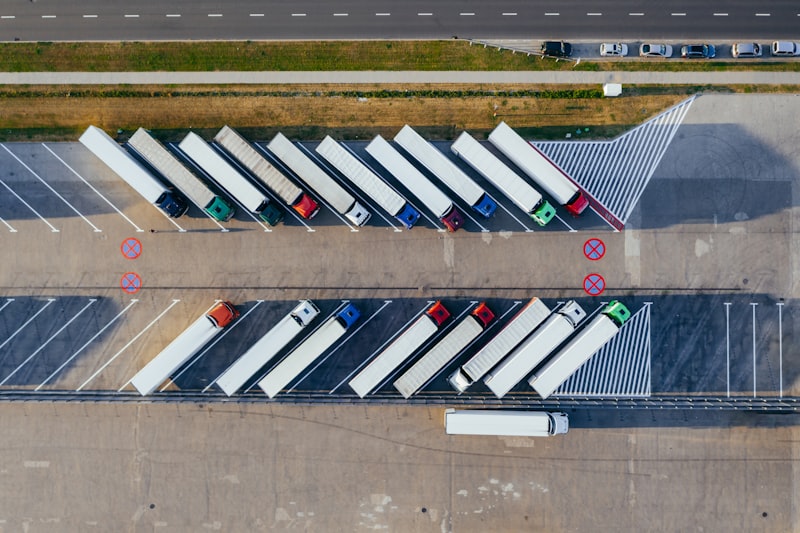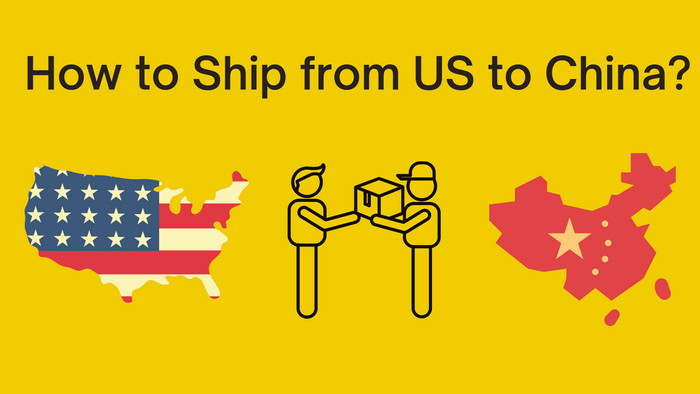What is an eCommerce logistics service?
If you start with this question, "how logistics work in eCommerce," this question is easy to answer. In short, logistics companies provide customized supply chain services such as warehousing, shipping, and last-mile delivery to eCommerce sellers.
4 types of logistics
Logistics can be divided into four types, production logistics, sales logistics, procurement logistics, and recycling logistics. Retailers sell goods to customers, which is called sales.
So what about looking at sales from the customer's perspective? Customers pay for a product. Then it is "buy," not "sale."
The two economic behaviors of "selling" and "buying" happen simultaneously, the same thing. Saying the same thing in different words from different angles also exists in logistics processes. For example, "sales logistics" and "purchasing logistics" are the same.
From the retailers' perspective, retailers ship the purchased goods to their warehouse or third-party logistics partners. It belongs to procurement logistics. From the standpoint of manufacturers and wholesalers, it belongs to sales logistics.
The term "recycled logistics" means recycling pallets and containers, customer returns, and reverse logistics. But for container recycling companies, this belongs to procurement logistics and sales logistics.
Although the entire product circulation cannot be listed out, we can break it into the following 4 types of logistics based on their characteristics in the actual business operation.
-
① Ship goods from the place of production to the retailers - "production logistics (internal logistics)."
-
② Deliver packages to the customer - "Sales Logistics (Market Logistics)."
-
③ Activities such as purchasing commodities and raw materials -"procurement logistics."
-
④ Receiving returned goods or other materials- "recycling logistics."
This classification is because even if they use the same transportation channel and operate with the same facilities, they have different processes and requirements. Their management and evaluation methods are different as well. As a logistics system, it must operate in an organized way.
In short, logistics is the concept of material circulation. The reason why we subdivide is only for efficient management and analysis.
3 Types of logistics information
There are many types of logistics information, so there are many ways to classify logistics information. All of the following information can help you improve your eCommerce logistics tracking system.
1. Logistics Functions We can classify based on the functions. Logistics information includes warehousing information, transportation information, processing information, packaging information, loading-unloading information, etc.
A specific part can be further refined. For example, storage information is divided into inbound information, outbound information, inventory information, handling information, etc.
2. Information Transfer Process Logistics information can be divided into input and data generated from logistics activities based on the information generation and information transfer process.
3. The role of information: According to the uses of information, logistics information can be divided into basic information, operation information, coordination information, and customer experience information.
With the growth of globalization and eCommerce, international e-commerce has been in full swing in recent years. The cross-border e-commerce logistics market has grown. However, in the long-term development process, cross-border e-commerce logistics problems have also been exposed continuously. So, what are the problems with cross-border e-commerce logistics?
What are the problems of cross-border e-commerce logistics?
1. Slow overseas logistics services
The parcels exported by cross-border e-commerce sellers are generally delivered through the postal system. Among them, China Post accounts for about 50%. Although there are many postal channels, the timeliness of reaching the shipping port is unstable.
The delivery time from China to the United States is generally long. About 10-15 days, the more distant countries have a longer time limit. Even the delivery time of several months has severely restricted the development of cross-border export e-commerce.
2. Difficult overseas logistics tracking
At present, many logistics companies can provide real-time overseas logistics courier tracking services. However, there are still many parcels that are difficult to trace after leaving the shipping country.
The situation is good in countries like the United States and Australia, where cross-border logistics is developed. However, in some developing countries, their logistics system is still immature. It isn't easy to track the shipment status timely.
3. Slow customs clearance and complicated return process
The big difference between cross-border logistics and local logistics is that it needs to pass through two customs checks: the customs of the exporting country and the customs of the destination country. In cross-border e-commerce, the key to logistics lies in the customs of the destination country. Customs seizures and inspections often occur. The processing results are nothing more than the 3 factors below:
1. Confiscation
2. Return of the shipment to the place of origin
3. Request for supplementary documents and information before release
The seller can only bear the losses caused by "confiscation" and "returns." The last situation will undoubtedly prolong the delivery time and lead to product return.
4. Lost and damaged packages
In cross-border logistics, it often takes 4 or more transshipments to deliver the goods to the customer. Package damage is typical in shipping. Whether sellers choose postal pouch or dedicated international logistics services, package loss always exists. These damages bring an awful shopping experience for customers and increase the seller's compensation for damages to goods and loss of customers.
4 existing modes of cross-border e-commerce logistics
Cross-border logistics companies and cross-border e-commerce are inseparable. Cross-border logistic service is a logistics plan that helps cross-border e-commerce sellers deliver orders and information to their customers.
International postal pouch
The postal network covers the whole world and is more comprehensive than any other logistics mode. The Universal Postal Union and the Kahala Post Organization have the most significant contribution to this change.
The International Postal Union is a specialized agency for international postal affairs established by the United Nations. It has adopted some treaties and regulations to improve international postal services and develop international cooperation in postal services.
There are many members of the International Postal Union. The unbalanced development of the postal system among the members makes it difficult to promote in-depth postal cooperation. Therefore, in 2002, the postal departments of six countries and regions with developed postal systems (China, the United States, Japan, Australia, South Korea, and Hong Kong) held a postal summit in the United States and established the Hala Post Organization.
The Kara organization requires that all members meet the standard of 98%. Suppose the goods are not delivered to the recipient on the specified date. In that case, the consigner is responsible for delivery will pay the customer 100% of the price of the goods.
These strict requirements have urged members to deepen cooperation and improve services. For example, parcels from China to the United States generally arrive within 15 days.
According to incomplete statistics, 70% of Chinese export cross-border e-commerce parcels are delivered through the postal system. China Post accounts for about 50%. Interconnection focuses on cross-border logistics supply chain services and is a global postal channel.
Overseas express logistics(International express)
Overseas express logistics(International express) refers to the 4 international logistics companies, DHL, TNT, FedEx, and UPS. These international express companies utilize powerful IT systems and localized services worldwide to bring a good logistics experience to overseas users through their self-built global network.
For example, a package sent from China to the United States via UPS can be delivered within 48 hours. However, high-quality services often come with high prices. Generally, cross-border merchants use international commercial express to deliver goods only when the customers require them.
Besides, these companies can provide more reliable overseas express logistics tracking information than others.
Cross-border dedicated logistics
Cross-border dedicated logistics are generally shipped overseas by air. The advantage is that it can concentrate many goods in certain countries and regions and reduce costs through economies of scale. And the global logistics tracking is more accurate and timely.
Therefore, its price is generally lower than that of express cross-border logistics. In terms of timeliness, dedicated logistics is slower than commercial express but faster than the postal pouch.
Overseas warehouse or border warehouse
Overseas warehouse service refers to the one-stop control and management service of the seller's cargo warehouse, classification, packaging, and distribution at the place of sale. To be precise, overseas warehouses should include three parts: front transportation, warehouse management, and local distribution.
Through the cross-border logistics management system, sellers can remotely manage overseas logistics operations in real-time.
Final Thought
Whether you are running a domestic online store or cross-border eCommerce business, supply chain management is vital in your operation. If you have not automated your shipping & tracking logistics management, contact us now for professional and affordable solutions. Keydelivery supports worldwide logistics tracking and provides cross-border logistics china shipping discounts & free tracking services.




![Top 11 Best Logistics Companies In Australia For Business [2022]- KeyDelivery](https://www.kd100.com/blogfile/img/best-logistics-courier-companies-in-australia.jpg)
![10 Best Courier Companies In Abu Dhabi [Ecommerce Hacks 2022]](https://www.kd100.com/blogfile/img/best-courier-service-in-abu-dhabi-dubai-uae.jpg)
